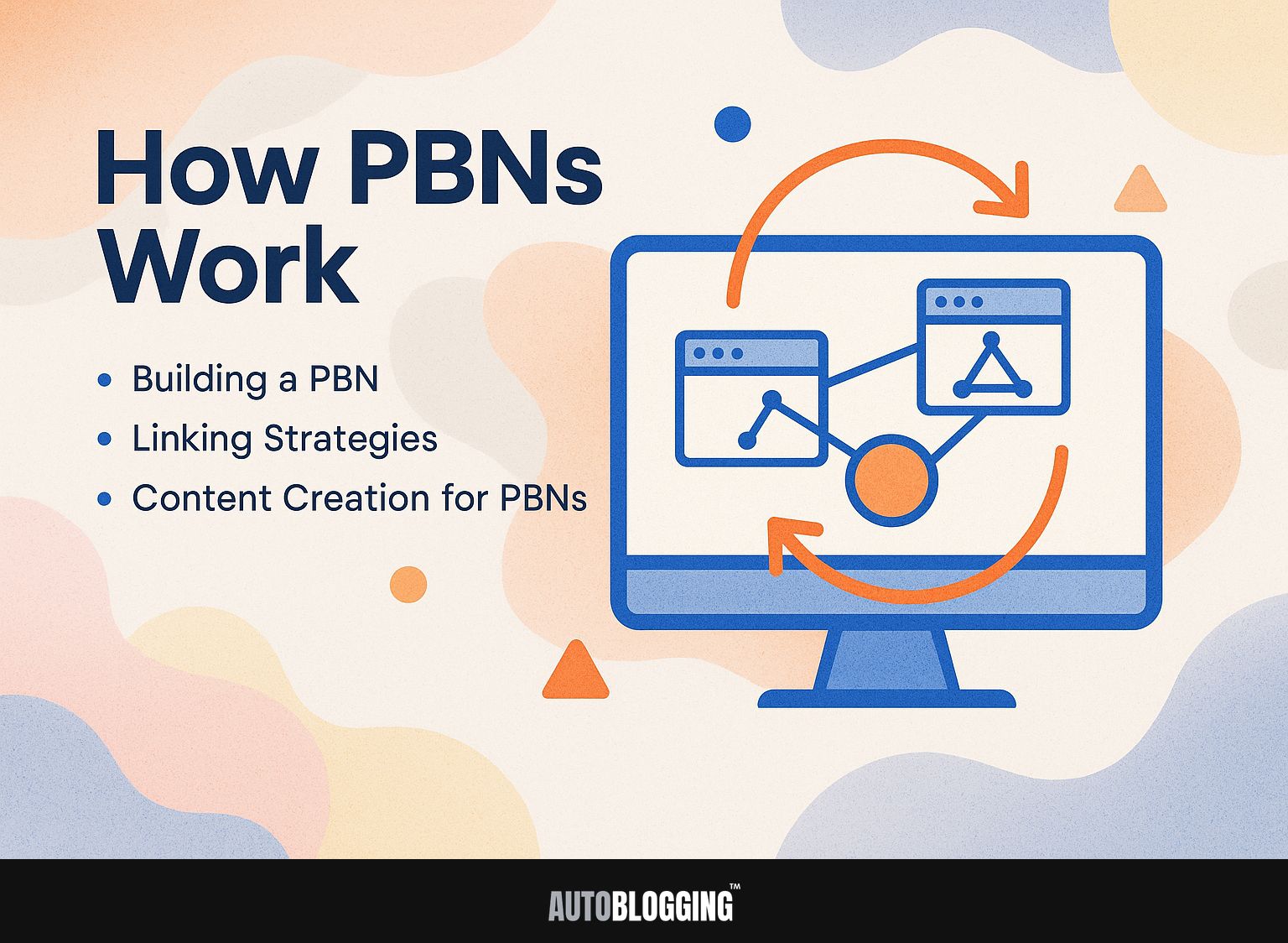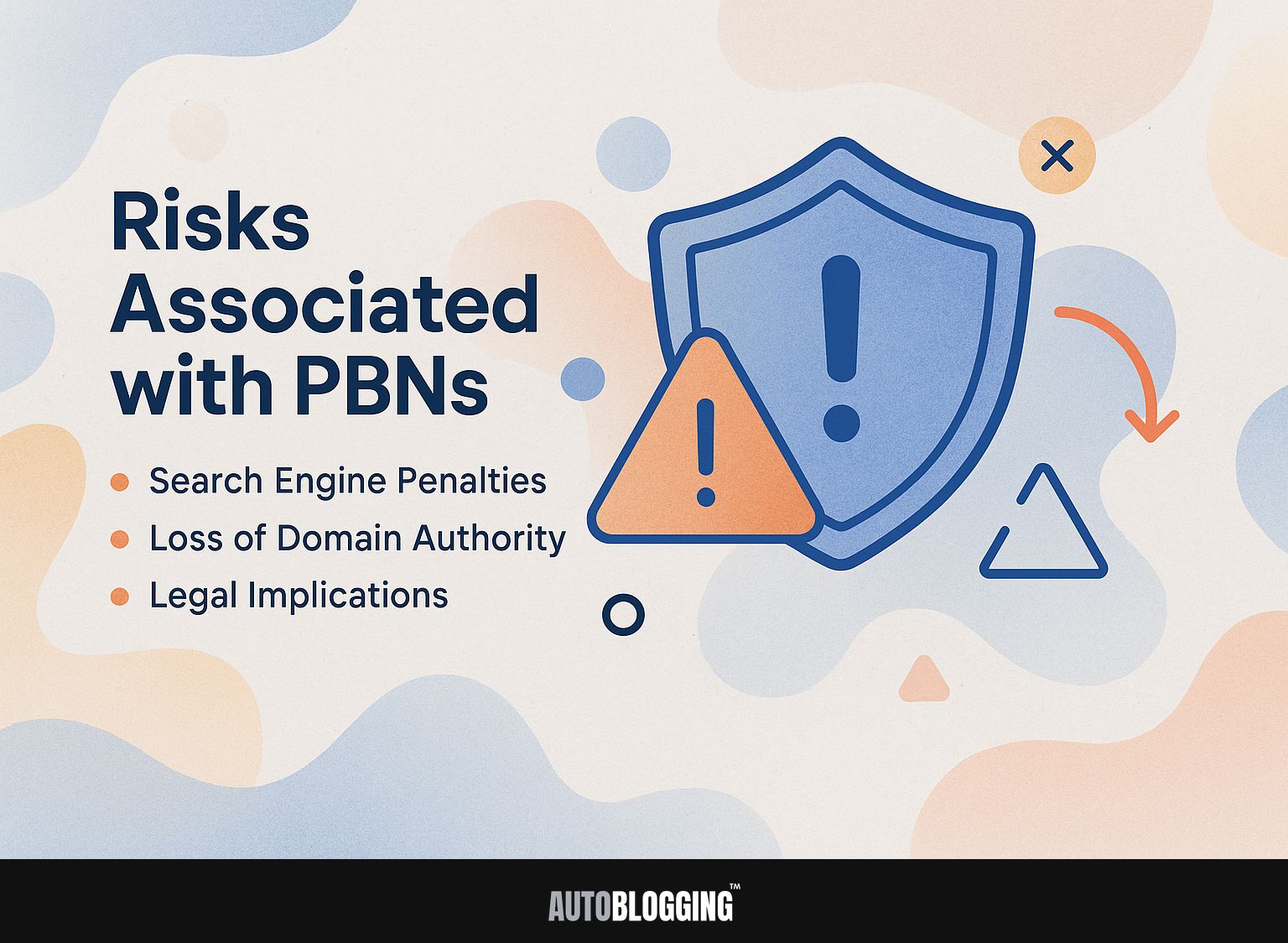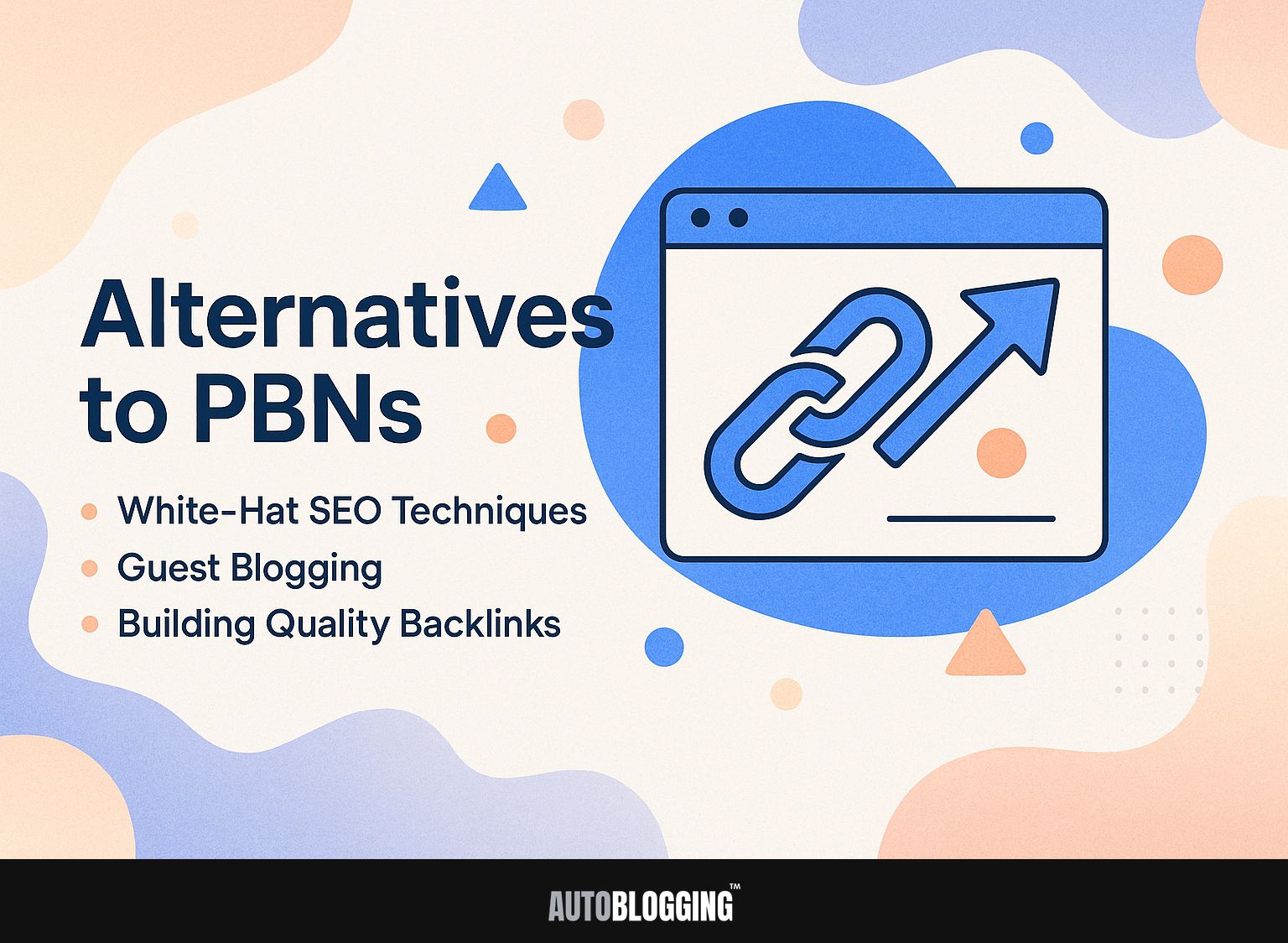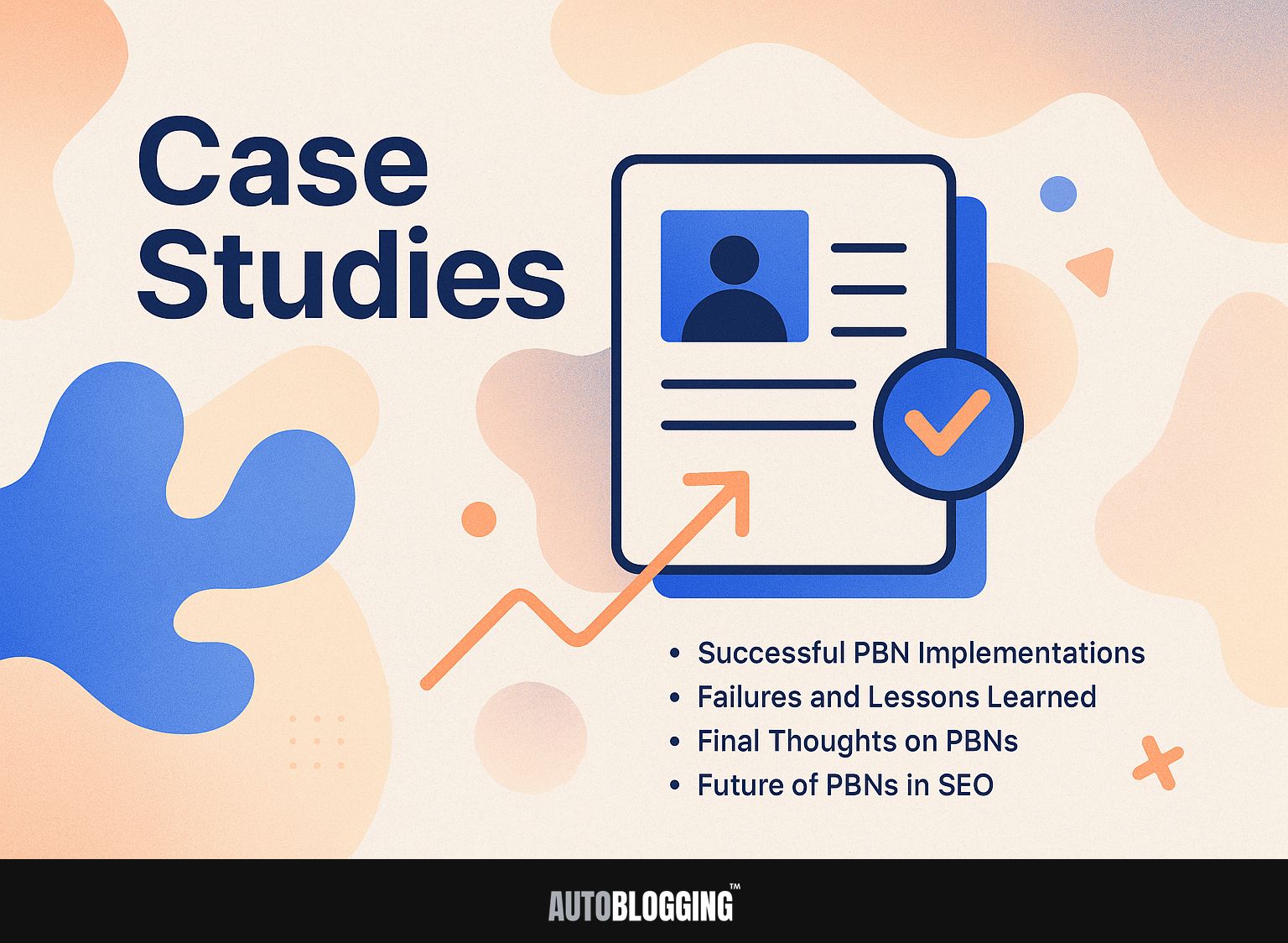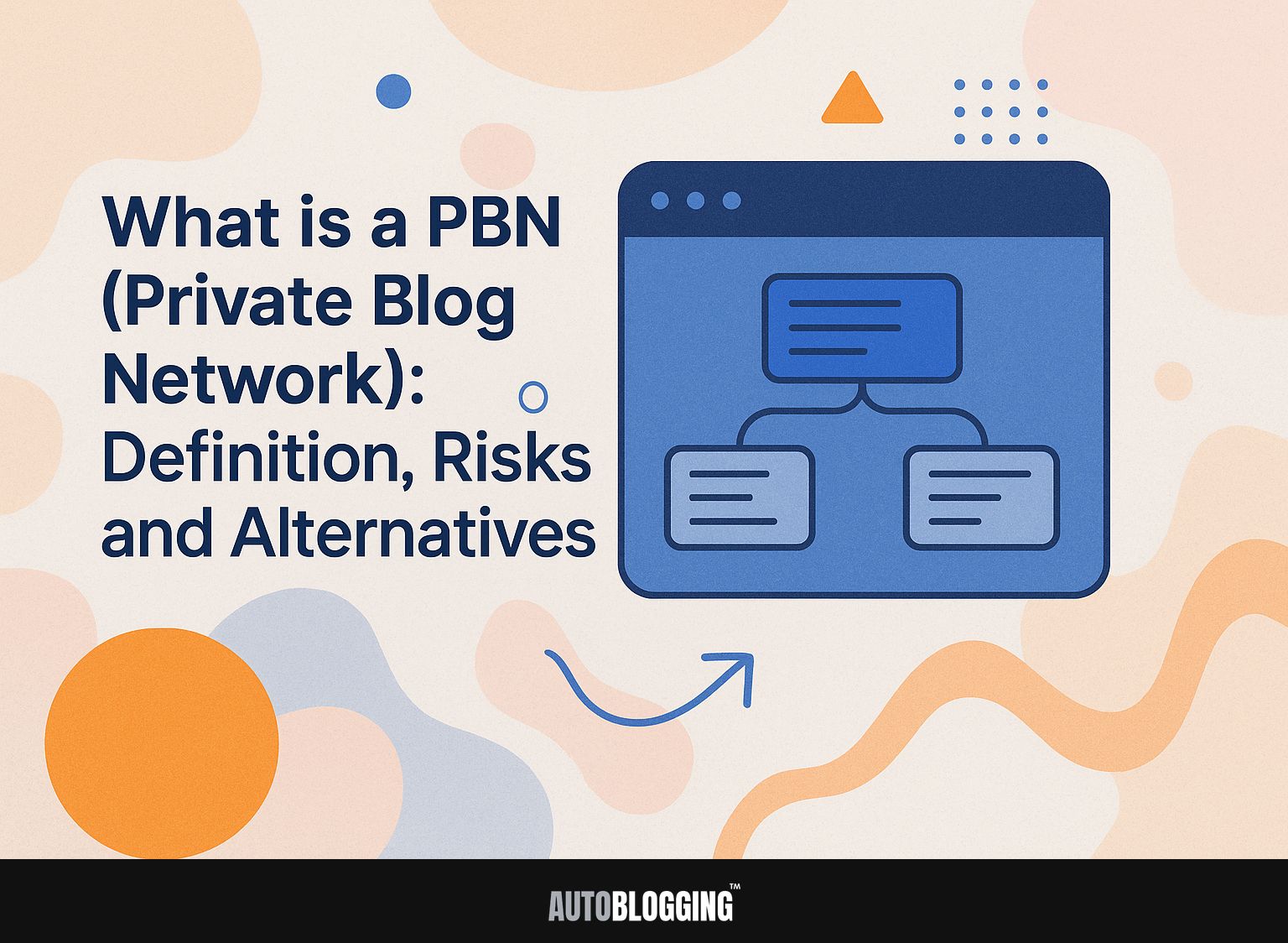
Curious about a Private Blog Network (PBN) and its role in link building? A PBN is an effective yet risky method for getting backlinks that can improve your Google search rankings. This article explains what PBNs are, looks at their risks like potential penalties from Google, and reviews other link-building strategies to protect your site’s reputation. Find out if a PBN suits your SEO plan.
Key Takeaways:
- A PBN (Private Blog Network) is a group of websites owned by an individual or company used to manipulate search engine rankings.
- PBNs can result in penalties from search engines, loss of domain authority, and potential legal implications.
- Alternatives to PBNs include white-hat SEO techniques, guest blogging, and building quality backlinks.
Contents
1. Definition of a Private Blog Network
A Private Blog Network is a collection of authoritative websites used specifically to build backlinks to a primary site, enhancing its online visibility.
PBNs operate by setting up multiple domain features to form a group of links that drive visitors to your main site.
Unlike traditional link building, which often relies on guest posts or directory submissions, PBNs provide more control and quicker results.
For example, if your primary focus is tech content, you could use a PBN of blogs in the tech niche, ensuring relevancy. To avoid search engine penalties, it’s important to have unique content on each site. Focus on creating high-quality content rather than a large amount.
2. Purpose of Using a PBN
The primary purpose of utilizing a PBN is to manipulate search rankings by controlling a network of sites that provide high-quality backlinks to targeted domains. Properly using PBNs can greatly increase organic traffic, with reports indicating up to a 300% rise.
To properly use a PBN, begin by finding well-established domains with strong numbers, like a Domain Authority (DA) of 30 or more. Make sure each site is on separate IP addresses to prevent detection.
Regularly update and diversify your content to maintain authenticity and relevance, which helps improve the overall credibility of your network and the domains you’re supporting.
How PBNs Work
Learning how PBNs work is important for using them correctly and reducing the risk of improper use.
1. Building a PBN
Creating an effective PBN involves choosing the right domains, reliable hosting, and a solid plan for content to keep authority.
Start by selecting aged domains that are at least three years old, as these tend to have established trust and backlinks. Use tools like Semrush to evaluate domain metrics such as Domain Authority and backlink profiles, targeting those with a clean history and relevant niches.
To host your website, use different providers such as Bluehost and SiteGround to prevent tracking problems.
Create unique and quality content for each website. These could be blog posts or resources that connect with your intended audience, ensuring your PBN appears authentic and helpful.
2. Linking Strategies
Effective linking strategies involve a balanced use of anchor text and diversified backlink sources to avoid triggering search engine penalties.
To implement this strategy, focus on using anchor text types in the following proportions:
- 70% branded, which builds trust;
- 20% exact match, enhancing relevance for specific keywords;
- 10% generic links, which provide a natural feel.
To monitor your backlink profile, use tools like Ahrefs or SEMrush. These platforms allow you to track your backlink types and identify any potential issues, ensuring your linking strategy remains effective and compliant with SEO best practices.
3. Content Creation for PBNs
Content in a PBN must be high-quality and relevant to maintain credibility and provide genuine value to users and search engines alike.
To make sure your content aligns with these standards, begin by doing detailed keyword research using tools such as SEMrush or Ahrefs to find topics that might attract search traffic.
Create at least 10 unique posts per site, targeting different keywords while ensuring a logical flow. Use Grammarly for checking your writing, improving how easy it is to read, and avoiding grammar errors.
Make sure to add links to related posts on your site and cite trusted external sources. This practice makes your articles better and increases the credibility of your PBN.
Risks Associated with PBNs
Although PBNs can offer strong SEO benefits, they carry big risks and can lead to harsh penalties if not handled correctly.
1. Search Engine Penalties
Search engine penalties, particularly from Google, can devastate a website’s traffic and credibility, often triggered by the use of PBNs. Two common types of penalties include manual actions and algorithm updates.
For instance, a notable case involved a popular e-commerce site that experienced a 70% drop in organic traffic after Google’s Penguin update targeted manipulative link practices, including PBNs. Another example is a tech blog that received a manual action due to suspicious backlink patterns, resulting in a significant SERP ranking fall.
To reduce risks, use tools like Moz or SEMrush to check backlinks often. This helps follow guidelines and avoid possible penalties.
2. Loss of Domain Authority
The misuse of PBNs can lead to a significant decline in a site’s domain authority, affecting its overall SEO performance.
To recover from this loss, start with link reclamation: identify and remove harmful backlinks using tools like Ahrefs or SEMrush. Next, focus on building high-quality links through:
- Guest blogging on authoritative sites
- Collaborations within your industry
- Using social media for natural engagement
Monitor your progress by regularly checking your domain authority and backlink profile. Applying these methods might take months, but they are important for improving your site’s online reputation and increasing its SEO effectiveness.
3. Legal Implications
Engaging in PBNs can expose site owners to legal challenges, especially concerning copyright and unethical link building tactics.
These risks can manifest in various ways. Copyright infringement may occur if you’re unknowingly using protected content from another site. Ignoring webmaster guidelines can cause search engines to penalize your site, including taking it out of their index.
To address these problems, it is important to speak with a lawyer who knows about digital marketing law. They can help you understand copyright laws and develop best practices for your link-building strategy.
Regularly reviewing your content sources and ensuring they are compliant with all relevant regulations also greatly reduces potential risks.
Alternatives to PBNs
If you’re cautious about PBNs, there are many legitimate SEO methods that can improve your website’s visibility and reputation without the related dangers. Exploring various tools and strategies, such as Getgenie alternatives, can offer safer and effective solutions.
1. White-Hat SEO Techniques
White-hat SEO techniques focus on ethical practices that align with search engine guidelines, promoting sustainable long-term growth.
Important ethical methods include content marketing, which involves writing helpful and interesting blog posts to draw in visitors naturally. Platforms like HubSpot offer tools to track performance metrics effectively.
Interacting with people on social media is important; using Sprout Social helps you study how your audience responds and change your content plan.
Influencer outreach through services like HARO (Help a Reporter Out) can secure high-quality backlinks, enhancing your site’s authority. By using these methods, you improve search rankings and build credibility and trust with your audience.
2. Guest Blogging
Guest blogging is a powerful method for building authority and obtaining backlinks while providing value to the hosting site.
To make the most of guest blogging, start by thoroughly researching your target sites. Look for blogs that align with your niche and have a strong audience engagement, as 50% of bloggers find success in earning at least one backlink from their posts.
Next, write a specific message that explains how your content helps their audience. Focus on creating high-quality, relevant articles that adhere to the host site’s guidelines. This method increases your reputation and builds connections in your field.
3. Building Quality Backlinks
Building quality backlinks requires a strategic approach focused on earning links from authoritative and relevant websites.
Start by identifying potential partners, such as niche bloggers or industry influencers, who can share content or collaborate on projects. Tools like Moz can help evaluate their domain authority and link potential, ensuring you target high-value sites.
Consider guest posting on these sites with original content that includes links back to your own. Working together on social media or giving interviews can increase exposure and trust, creating chances for natural backlinks.
Make all content easy to share and useful, so people will want to link to it on their own.
Best Practices for PBN Management
Proper handling of PBNs is essential to reduce risks and keep them working well for improving SEO results.
1. Maintaining Anonymity
It is important for PBN operators to stay anonymous to stop search engines from linking their networks to their main sites.
- To achieve this, start by using different domain registrars for each site, ensuring that WHOIS information is private.
- Consider hosting your sites on dedicated servers or VPSs rather than shared hosting, as this reduces the risk of IP address correlation. Tools like Namecheap and Bluehost offer privacy protection features.
- Employing a VPN can mask your IP address during the setup and maintenance of your PBN, further safeguarding your identity.
By strategically implementing these measures, you can effectively shield your online presence.
2. Diverse Hosting Solutions
Using various hosting options with different IP addresses makes PBN links look genuine and lowers the chance of being noticed.
For example, consider using Bluehost for one site, which offers reliable support and reasonable pricing. Pair this with SiteGround for another, known for its excellent uptime and fast performance.
DigitalOcean is a solid option for managing increased traffic smoothly. By using these services together, you create unique patterns, which makes it harder for search engines to link your PBN sites and increases the success of your link-building strategy.
3. Regular Monitoring and Updates
Regularly check and update your PBN sites to make sure they stay useful and follow SEO rules.
Use tools like Google Search Console to monitor how your site is doing and find issues with site crawling. Ahrefs is a great choice, providing information about backlinks and the general condition of a site.
Regularly update your content to address any changes in industry trends or algorithm updates. For instance, if a particular keyword gains traction, adjust your articles to reflect this shift.
Set a schedule for your reviews-monthly assessments can help you keep your strategies aligned with current SEO practices, ensuring your PBNs maintain their effectiveness.
Case Studies
Looking at real-world examples can give useful information about how effective and problematic using PBNs can be.
1. Successful PBN Implementations
Successful PBN implementations often showcase innovative strategies that lead to substantial increases in traffic and rankings.
One effective PBN strategy involved using diverse hosting platforms, with WP Engine for high-speed performance and SiteGround for cost-effective options.
A case study showed a website using a private blog network (PBN) with 10 links from high-authority domains, which led to an increase in traffic from 500 to 2,000 visitors per week within a month.
Using original content and exact anchor text placement increased its rankings a lot. Tools like Ahrefs for backlink analysis helped check the quality of linked sites, leading to better overall SEO performance.
2. Failures and Lessons Learned
Reviewing what failed in PBN strategies can provide important lessons to avoid common errors in upcoming projects.
One notable failure occurred with a PBN built around low-quality, spammy domains. The primary mistake was ignoring domain authority and quality, resulting in significant penalties from Google, including deindexing.
Another failure involved overly aggressive link building, leading to a dramatic drop in rankings after a Google algorithm update. These experiences emphasize the importance of prioritizing authority in chosen domains and maintaining a natural linking pattern.
By learning from these mistakes, marketers can build long-lasting PBNs that can withstand upcoming algorithm updates.
3. Final Thoughts on PBNs
Final thoughts on PBNs emphasize the necessity of ethical considerations and long-term strategies in link building.
Although PBNs (Private Blog Networks) may look appealing for fast SEO improvements, they come with major risks, such as punishments from search engines. Instead, focus on ethical link-building techniques such as guest blogging, creating high-quality infographics, or collaborating with influencers.
Tools like Ahrefs can help identify potential guest post opportunities, while platforms like Canva simplify infographic creation.
Focusing on real content and building relationships helps your site grow steadily and improves its trustworthiness. In the end, sticking to ethical practices will result in greater benefits over time.
4. Future of PBNs in SEO
The use of PBNs in SEO faces challenges because search engines are updating their algorithms to combat manipulation.
As Google and other search engines improve their algorithms, it becomes harder to keep Private Blog Networks (PBNs) working effectively. New regulatory changes may tighten scrutiny on link-building strategies, leading to harsher penalties for detected PBNs.
For instance, Google’s focus on user experience and content quality means sites with low-quality or duplicated content are more likely to be penalized.
To change your approach, think about varying your backlink strategy: try guest blogging, forming partnerships, or using high-quality niche directories.
By using genuine strategies, you can manage the changing environment while keeping your site’s authority and visibility.
Frequently Asked Questions
1. What is a PBN (Private Blog Network)?
A PBN, or Private Blog Network, is a network of multiple websites owned and operated by one person or entity that are used to manipulate search engine rankings by creating backlinks to a main website.
2. What is the definition of a PBN?
A PBN is a group of websites linked together to wrongly raise the search engine position of a primary site. These websites are usually created with the sole purpose of creating backlinks to one specific website.
3. What are the risks of using a PBN?
The risks of using a PBN include the potential for penalization by search engines, as well as damage to the credibility and reputation of the main website. PBNs are considered a form of black hat SEO and are not in line with search engine guidelines.
4. Why is using a PBN considered a risky SEO tactic?
Using a PBN is considered a risky SEO tactic because it goes against the guidelines set by search engines. PBNs are set up just to change search engine rankings, not to give helpful or suitable content for people.
5. What are some alternatives to using a PBN for SEO?
Some alternatives to using a PBN for SEO include creating high-quality, relevant content, building backlinks through legitimate outreach efforts, and utilizing social media and other marketing strategies to drive traffic and improve search engine rankings.
6. Is it worth using a PBN for SEO?
No, it is not worth using a PBN for SEO. It breaks search engine rules and can harm the website by causing penalties and ruining its reputation. It is always better to focus on making useful and important content and using honest SEO methods for long-term success.

